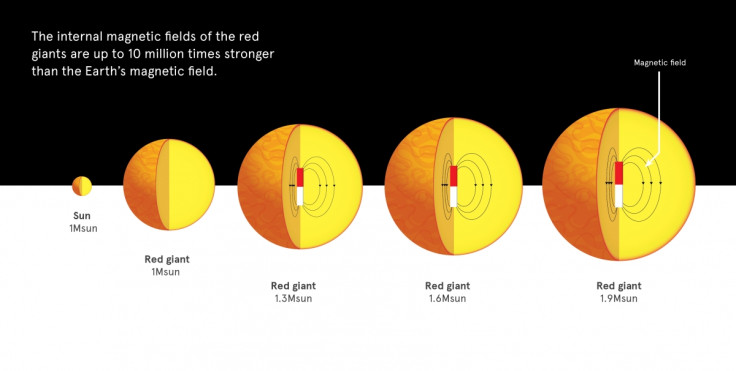Magnetic fields are more common in stars than we thought - with a force of 10 million times that on Earth

Strong magnetic fields are common in stars – not a rarity as previously believed, say researchers. It was found that stars only slightly bigger than our sun can have magnetic fields up to 10 million times that of Earth.
Previous to this study, it was widely believed that very few stars have magnetic fields. Therefore, theories about their evolution can now be analysed more accurately, knowing their magnetic fields will affect their development.
"This is tremendously exciting, and totally unexpected," said Dennis Stello, lead researcher of the study. "Because only 0-5% of stars were previously thought to host strong magnetic fields, current models of how stars evolve lack magnetic fields as a fundamental ingredient. Our result clearly shows this assumption needs to be revisited."
The research, led by the University of Sydney, built upon a study from the Californian Institute of Technology, which suggested there could be a presence of magnetic fields in these stars.
In order to confirm that theory, researchers analysed 3,600 stars which are larger than our sun – or red giants. Of that large sample, more than 700 of the stars were found to have a strong magnetic field in its core; far more than expected.
Stello explained: "Because our sample is so big we have been able to dig deeper into the analysis and can conclude that strong magnetic fields are very common among stars that have masses of about 1.5-2.0 times that of the sun."
The result of the study drastically changes the way that scientists believed red giants evolve. Magnetic fields can change physical processes in the core of the star – for example, solar rotation.

In order to detect the magnetic field, astronomers used a new technique called asteroseismology. Combined with data from Nasa's Kepler mission, this essentially involves looking inside the surface of the star, to find the field close to its stellar core.
The research team published their results in Nature, and they hope that the new discovery will help astronomers to understand the changing of magnetic fields through its lifetime. More precisely, they hope to understand the Sun's 22-year magnetic 'solar cycle', which affects radio waves and climate on Earth.
"In the past we could only measure what happens on the surfaces of stars, with the results interpreted as showing magnetic fields were rare," said Stello. "Now it is time for the theoreticians to investigate why these magnetic fields are so common."
© Copyright IBTimes 2025. All rights reserved.






















